- Unit20 Mar 2015
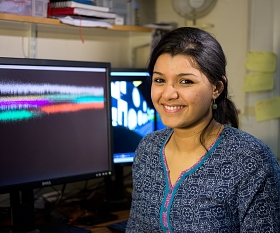
Congratulations to Abhilasha Joshi who has been awarded the Senior Hulme Scholarship by Brasenose College. These scholarships are awarded each year to the best doctoral students as recognition of academic distinction. As a part of the award, Abhilasha will receive a research allowance and Senior Hulme scholars are also entitled to certain High Table dining rights.
Abhilasha is in the second year of her D.Phil studies as a Felix Scholar in Professor Peter Somogyi’s lab and her co-supervisor is Dr David Dupret. She received her first degree in Integrated Sciences from the Indian Institute of Science Education and Research, Mohali. She studies the temporal neuronal dynamics between the medial septum and its major projection target, the hippocampus, in order to clarify circuit level mechanisms responsible for spatial navigation. She has implemented multi-unit recordings in the medial septum of mice performing a spatial navigation task in a virtual reality environment. She aims to characterize single neurons and to establish how behaviorally relevant information is structured in the medial septum in relation to simultaneously recorded neuronal activity in the hippocampus.
- Unit14 Mar 2015
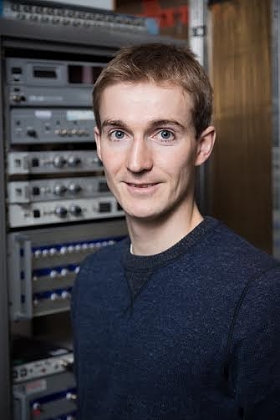
Warm congratulations to MRC Unit student Gido van de Ven for winning the Gotch Memorial Prize 2014, which is given for the best Oxford D.Phil. Transfer Status report of a graduate student in the field of Physiology. The prize comes with an award of £1,000.
For his D.Phil. thesis research, Gido has implemented an unsupervised statistical method to identify and track cell assemblies from multi-unit recordings. Applied to tetrode recordings in the hippocampus of freely-moving mice, this method was shown to identify assemblies with strong spatial tuning that are reactivated during subsequent sleep and reinstated upon re-exposure to the same environment. To study the causal role of cell assembly dynamics in the formation, consolidation and retrieval of spatial memory, Gido has also implemented a closed-loop optogenetic feedback system to transiently silence hippocampal assemblies during on-line detected sharp-wave/ripples events. Gido's DPhil research is supervised by Dr. David Dupret.
- Unit7 Mar 2015
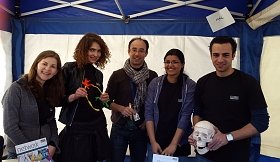
Unit Programme Leader David Dupret, Investigator Scientist Tim Viney, D.Phil. Students Abhilasha Joshi and Eszter Korman, and Visiting Students Alison Comrie and Minas Salib, all enthusiastically served on the MRC stand at the Oxfordshire Science Festival held in Oxford's Bonn Square on Saturday 7th March 2015. The Unit crew was joined by many other MRC-funded staff and students from MRC Harwell. This year, the Unit team led several interactive displays with a special emphasis on brain plasticity, dementia and memory disorders. A various range of hands-on activities were offered, such as making of brain cells (from pipe cleaners!), observation of Golgi-stained neurons and 3d models of the human brain.
Unit D.Phil student Abhilasha Joshi commented “At the Oxfordshire Science Festival, we had to tailor our activities for an audience encompassing all age groups. We found ourselves in need of some new vocabulary to communicate: 'thorns' for spines and, my favourite, ‘head-box’ for skull. The actvities using the ‘brain plasticity goggles’ were hugely popular. We had some amazing discussions, and surprised many of our visitors with facts like ‘you have billions of nerve cells in your brain’. It was lovely to see many young children diligently making neve cells and networks. One of them remarked that the brain cells she had made were of different ‘types’ because they had different ‘shapes’ and ‘colours’ – that insight made my day!”.
- Unit3 Mar 2015
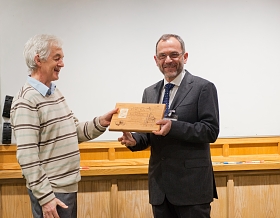
Professor Jean-Marc Fritschy delivered the 11th David Smith Lecture in Anatomical Neuropharmacology.
"Plasticity of GABAergic synapses: mechanisms and implications"
The 11th David Smith Lecture in Anatomical Neuropharmacology was given on 3 March 2015 by Professor Jean-Marc Fritschy of the Institute of Pharmacology and Toxicology at the University of Zurich http://www.pharma.uzh.ch/neuromorpho
The Lecture was hosted by Professor Peter Somogyi.
The lecture series celebrates the vision of the previous Chair of Pharmacology Prof. A. David Smith, who set up the Unit in 1985 and is currently Honorary Associate Director.
- Unit5 Feb 2015
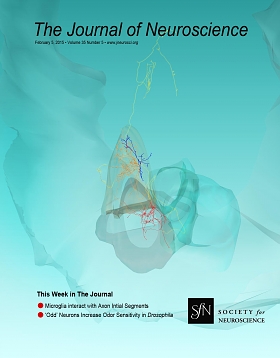 3D reconstruction of a large intercalated (L-ITC) neuron (TJX-31A) recorded in the amygdala of an adult rat in vivo. Reconstruction by Daniela Busti and Ben Micklem.
3D reconstruction of a large intercalated (L-ITC) neuron (TJX-31A) recorded in the amygdala of an adult rat in vivo. Reconstruction by Daniela Busti and Ben Micklem.The group of Marco Capogna, in collaboration with other Unit members and with the group of the ex-Unit member Francesco Ferraguti report in the Journal of Neuroscience 35 (5): 2044-2057, 2015 the organisation of a novel GABAergic neuron type of the rodent amygdala, the so-called large intercalated cell (L-ITCc). They identified them with juxtacellular recording/labelling in vivo.
L-ITCs are GABAergic, strongly express metabotropic glutamate receptor 1a, the GABA-A receptor a1 subunit and moderate levels of parvalbumin. Furthermore, L-ITCs are innervated by fibres enriched with metabotropic glutamate receptors 7a and/or 8a. In contrast to small-sized spiny ITCc, L-ITCc possess thick, highly-branched dendrites, and long-range axonal projections innervating interneurons in the basolateral amygdaloid complex. The axons of L-ITCs also project to distant brain areas such as the perirhinal, entorhinal and endopiriform cortices. In vivo recorded L-ITCc are strongly activated by noxious stimuli, such as hindpaw pinches or electrical foot-shocks, consistent with monosynaptic innervation shown from nociceptive intralaminar thalamic nuclei. The authors propose that, during salient sensory stimulation, L-ITCs disinhibit local and distant principal neurons, acting as “hub cells”, to orchestrate the activity of a distributed network.
- Unit4 Feb 2015
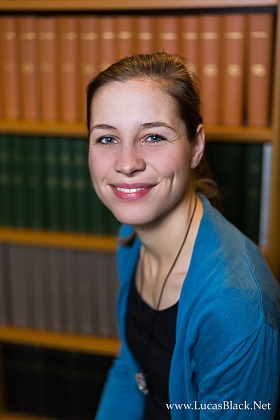
Our warmest congratulations to Anna-Kristin Kaufmann who has been awarded a prestigious scholarship of the German National Academic Foundation.
Anna’s D.Phil. thesis research in the Unit is focused on the function and dysfunction of midbrain dopamine neurons, and is carried out under the supervision of Dr Paul Dodson in the groups of Professor Paul Bolam and Professor Peter Magill.
- Unit2 Feb 2015
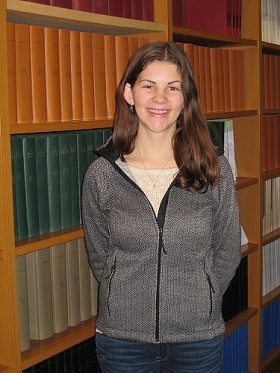
Miss Alison Comrie joins the group of Professor Peter Somogyi as visiting student for a stay of four months. Alison is currently an undergraduate student pursuing a B.S. Neuroscience & Cognitive Sciences degree and a student researcher at Dr Carol Barnes’ laboratory, Neural Systems, Memory, and Aging, University of Arizona. http://www.embi.arizona.edu.
During her time in Professor Peter Somogyi’s laboratory, Alison will participate in a project on ‘Characterizing the molecular expression profiles and connectivity of medial septal/diagonal band neurons and their hippocampal synaptic targets’.
- Unit9 Jan 2015
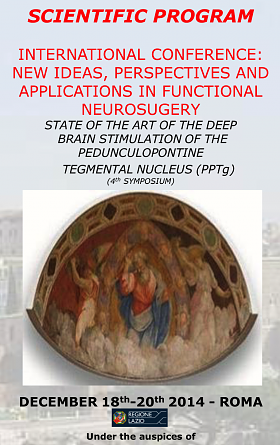
Paul Bolam, Juan Mena-Segovia and Peter Brown gave lectures at a functional neurosurgery meeting in Rome in December. The conference, entitled “New ideas, perspectives and applications in functional neurosurgery”, also included the 4th Symposium on “State of the art of the deep brain stimulation of the pedunculopontine tegmental nucleus”
The meeting took place at Magliana Castle-St. John the Baptist Hospital, in the grandly named "Julius II Hall", and included lectures on many aspects of deep brain stimulation for the treatment of a variety of disorders including Parkinson’s disease, Alzheimer’s/dementia and Tourette’s Syndrome.
Paul Bolam: “Functional organisation of the basal ganglia”
Juan Mena-Segovia: “Neurons, neurotransmitters and connections of the PPTg"
Peter Brown: “What can recordings from the human PPN tell us?”
- Unit15 Dec 2014
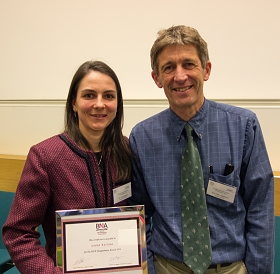
Unit student Linda Katona who had her viva in August received the 2014 Postgraduate Award of the British Neuroscience Association for the best thesis in neuroscience. She carried out her studies under the supervision of Profs. Thomas Klausberger and Peter Somogyi and wrote up her results in the thesis: “The role of cell-type selective synaptic connections in rhythmic neuronal network activity in the hippocampus”. President-elect Prof. John Aggleton, FRS handed her the certificate in the Christmas Symposium of the BNA on the 15th of Dec. 2014.
- Unit25 Nov 2014
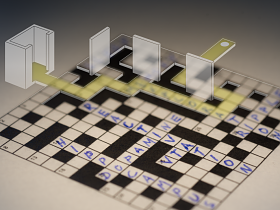 McNamara and colleagues used a crossword maze learning task to show that optogenetic photostimulation of dopaminergic (DA) neurons in the ventral tegmental area (VTA) during exploration can enhance subsequent spatial memory and increases hippocampal sharp wave/ripple-mediated reactivation during rest periods. In the picture the intersection between the hippocampus, dopamine and the VTA are in sharp focus while other details fade out of focus as do memories which are less stable when formed without the action of dopamine within the hippocampus.
McNamara and colleagues used a crossword maze learning task to show that optogenetic photostimulation of dopaminergic (DA) neurons in the ventral tegmental area (VTA) during exploration can enhance subsequent spatial memory and increases hippocampal sharp wave/ripple-mediated reactivation during rest periods. In the picture the intersection between the hippocampus, dopamine and the VTA are in sharp focus while other details fade out of focus as do memories which are less stable when formed without the action of dopamine within the hippocampus.This month Colin McNamara and colleagues report compelling evidence of how rewarding or novel experiences strengthen newly-encoded spatial memories. The hippocampus provides the brain with representations of space (J. O'Keefe and J. Dostrovsky, 1971) but newly-formed hippocampal representations may degrade with time unless stabilized by additional processes.
In this study, the Unit members show that hippocampal sleep reactivation during sharp wave/ripple events (thought important for memory consolidation) can be primed through optogenetic activation of dopaminergic afferents within the hippocampus. These dopaminergic fibres project from the brain’s reward centre in the midbrain, the VTA (ventral tegmental area). Neurons within the VTA are active during exploration of novel environments and learning of new goal locations. They further demonstrated that this optogenetic activation of the dopaminergic fibres within the hippocampus increased memory persistence measured through both behavioural performance and the sustained stability of hippocampal representations of space. These results establish a link through which the brain’s reward system can produce increased memory persistence.
See also the Nature Neuroscience the News and Views piece about this article at http://dx.doi.org/10.1038/nn.3875